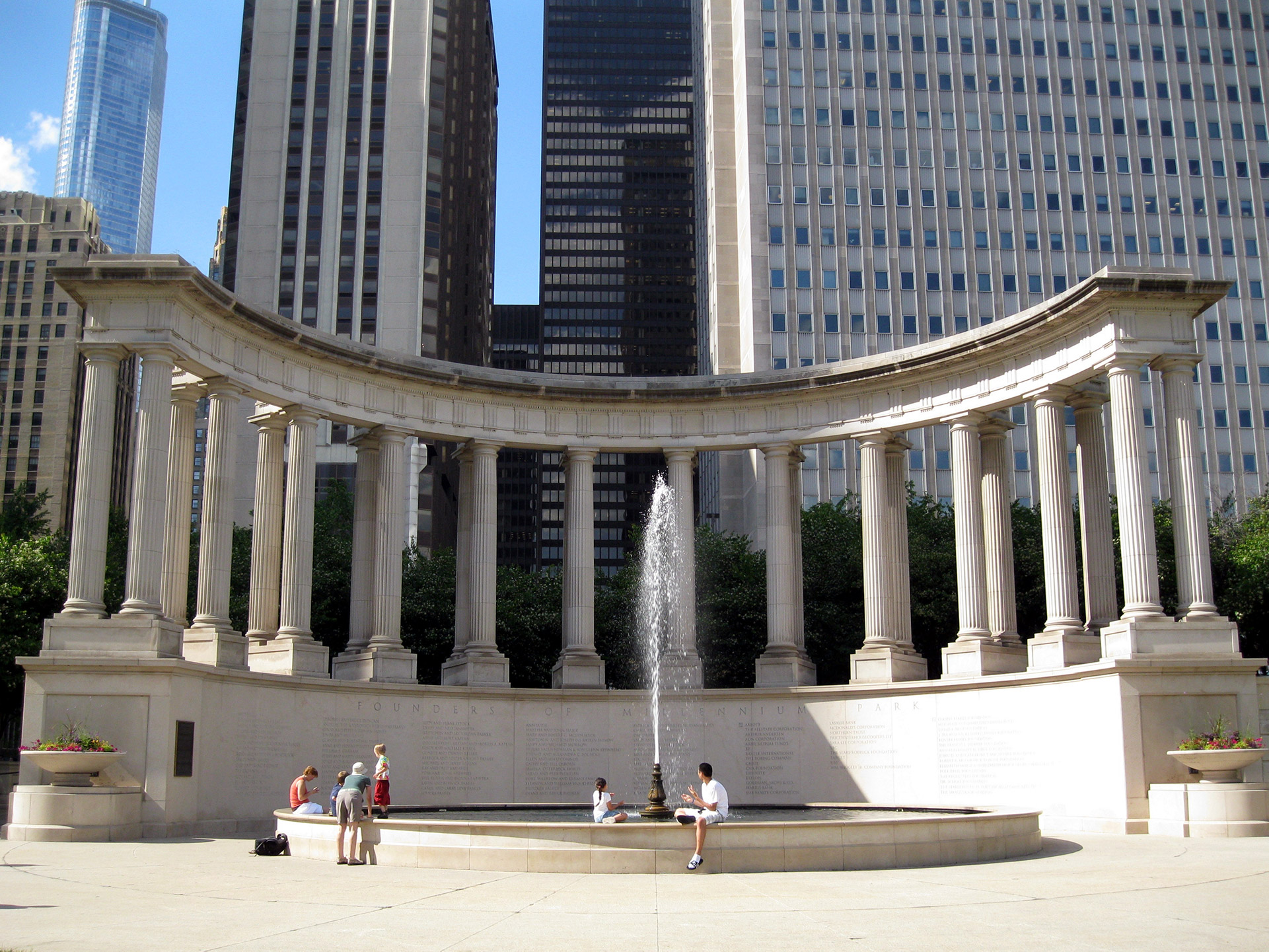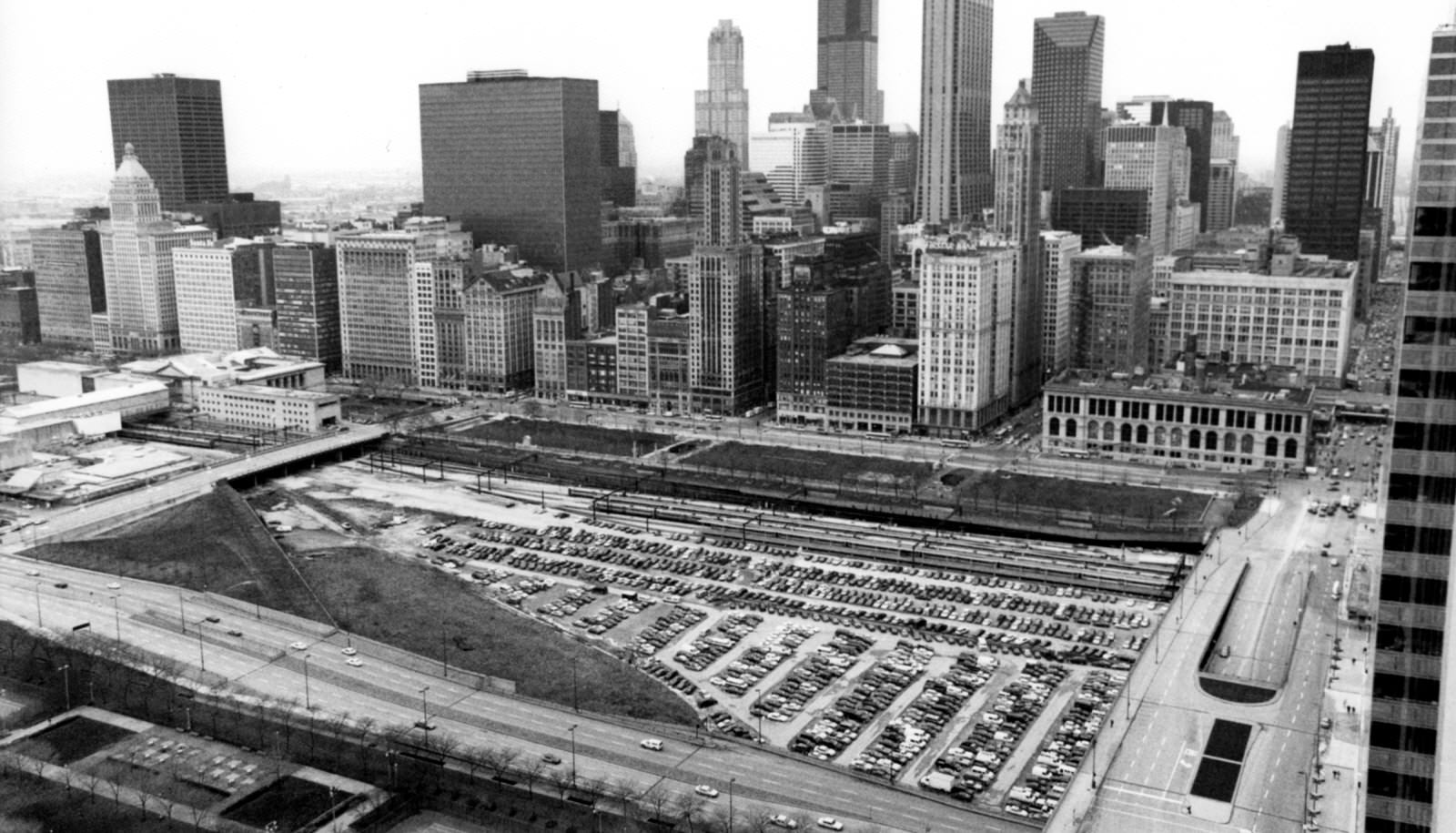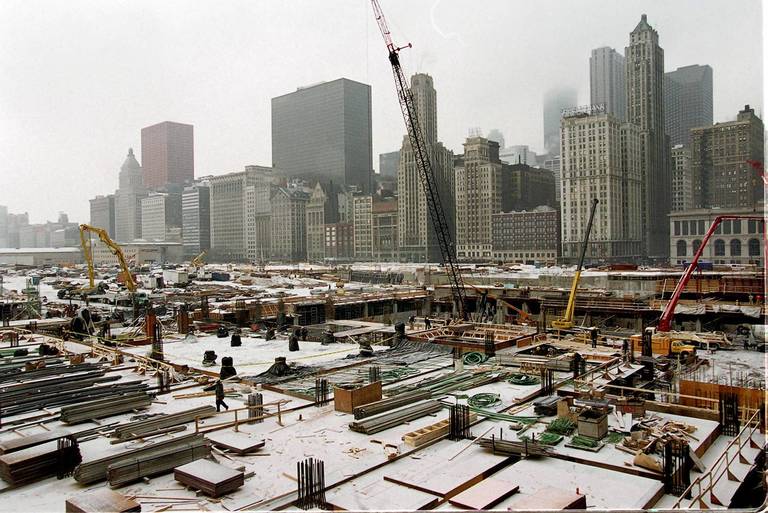Discover Millennium Park’s roots beginning with a transformation from an industrial wasteland to a world-renown public urban park. The 24.5-acre Millennium Park represents an unprecedented public-private partnership, and has become a thoroughly modern achievement for Chicago in the tradition of its original founders.

home › learn
HISTORY

1850 - 1997
From the 1850s until 1997, the land that is now occupied by Millennium Park was controlled by the Illinois Central Railroad. Visionary Chicago leader Daniel Burnham considered the railroad’s control of the area to be so untouchable that he developed the Grant Park portion of his 1909 “Plan for Chicago” around it.
Thus, the area, which was covered with unsightly railroad tracks and parking lots, remained blight on Chicago’s lakefront throughout the 20th century.

1997 - 2004
Planning for Millennium Park began in 1997 with Mayor Richard J. Daley in an effort to provide civic amenities and to lure in private donors. One year later, work began on-site and the city began collaborating with architects and artists to create various spaces within the park.
Frank Gehry was brought in as one of the most innovative architects of his time to design the Jay Pritzker Pavilion, which was named due to funding from donor Jay Pritzker.
In early 2000, plans were well underway for the Cloud Gate, Crown Fountain, Cycle Center, and the BP Bridge.
In July 2004, the park opened to the public with a weekend opening event.
-f7da66d525feaf948445c1b21988bb35.png)